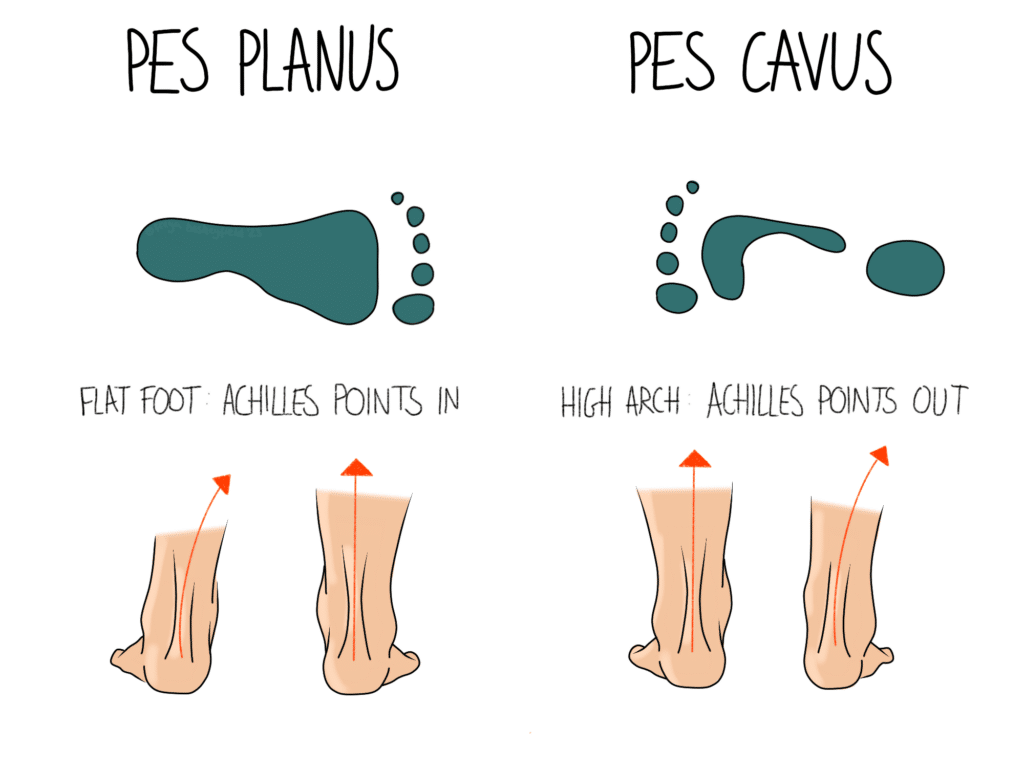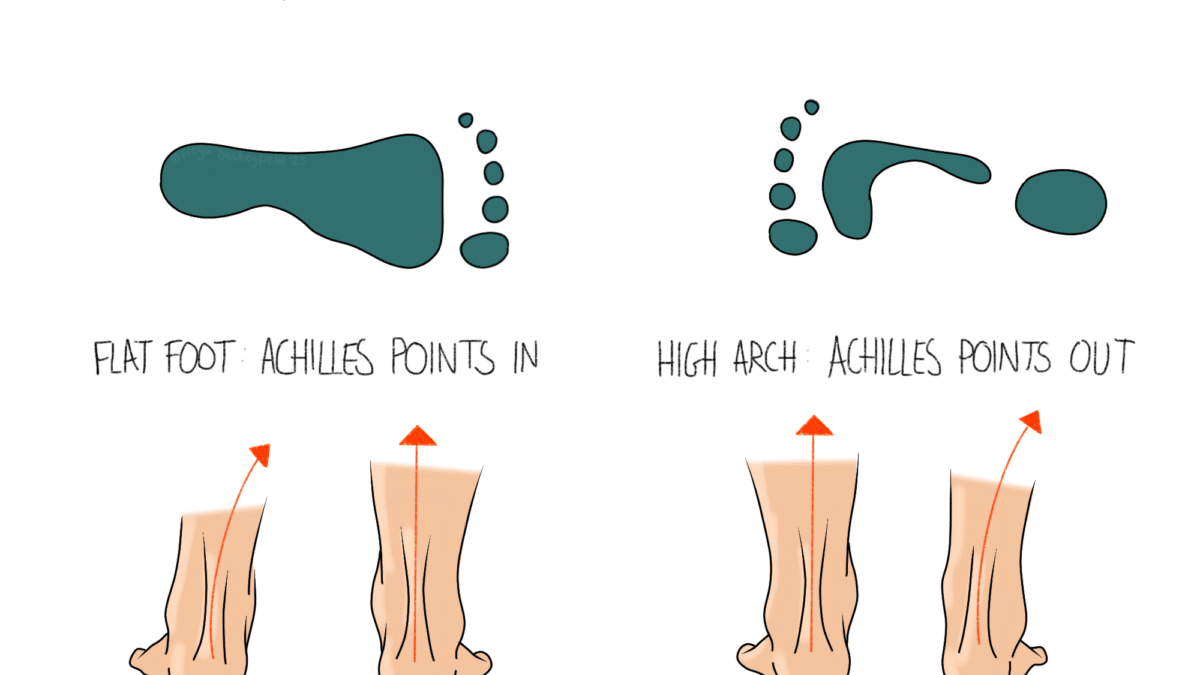



Without context, these labels mean very little. But if you suffer with pain in the foot, ankle, calf, or even beyond, the anatomy may be significant. The height of the arch at rest plays a role in dictating the angle of the Achilles tendon. If the arch is flat, the foot rolls inward, stretching the inner border of the tendon. The reverse is true for a high arch. This is easily identified when assessing the foot from behind while you stand. It may also be evident in the way your shoes wear- do you notice the sole is more worn on the inner or outer edge?
There are 26 bones in the feet. The high number relative to the area helps with shock absorption, but also allows mobility. Movements are small, as the feet are load bearing and need to be supportive, but they are still important. If the foot is weightbearing more towards one side, the joints will be under more pressure and may be restricted in their movement.
We’ve written about osteoarthritis before, and the importance of moving through the whole range of a joint. Long term restriction limits the cartilage’s ability to flush out waste and absorb nutrients, potentially leading to arthritic changes. Improving the mobility is a preventative measure against arthritis in the foot. There is also a connection between pes planus and cavus and plantar fasciitis: a condition in which the sole of the foot becomes painful.
As mentioned above, one stark effect of unusual arches is the demand on the Achilles tendon. Achilles tendinopathy develops as the result of repeated microtrauma. With that in mind, it’s unsurprising that it has a link with pes planus and cavus. The good news is that conservative treatments are generally effective, and your osteopath can provide these.
If you notice soreness in the tendon, or an ache in the calf muscle itself, click the link below to book an appointment.
The body is good at adapting, and if you have always had unusual arches, you may be otherwise symptom free. If, however, the demand is too much for you, or if only one foot is affected, you may develop aches and pains further up. No one is perfectly symmetrical, and your osteopath’s goal is more about helping your body to adapt comfortably than trying to “correct” any asymmetries. If you find that your high or fallen arch leads to:
It may be time to book an appointment.
Click here to make an appointment for your arches in Leicestershire or Rutland
About Us
Avin is an osteopath with a very simple and traditional approach whilst treating – “Find it, Fix it, Leave it”. Prevention of problems whilst addressing existing complaints is the key to his treatment plan.
Useful links
Contact Us
2019 © Copyright – AVIN PATEL & MSK OSTEOPATH. Privacy Policy
